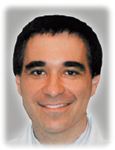Article
Prime/boost vaccine for prostate cancer shown 'feasible'
Orlando, FL--A small clinical trial presented at the American Society of Clinical Oncology annual meeting has demonstrated the feasibility of a vaccine strategy for the treatment of men with prostate cancer who had completed neoadjuvant chemotherapy or hormone therapy at least 6 months prior to enrollment. The multi-institutional phase II study evaluated the role of vaccination in men with rising PSA after local treatment for prostate cancer using a prime/boost approach with vaccinia virus and fowl pox virus expressing PSA.

Of the 70 men initially enrolled in the study, 64 eligible patients with biochemical progression after local therapy were randomly assigned to three treatment groups. Those in group A were injected intramuscularly every 6 weeks with 4 injections of fowl pox-based vaccine engineered to produce PSA (rF-PSA). Group B patients were given four intradermal injections of rF-PSA, followed by one injection of vaccina-based vaccine engineered to produce PSA (rV-PSA). Patients in group C received rV-PSA followed by three doses of rF-PSA.
In an interview with Urology Times, lead author Howard Kaufman, MD, explained that the vaccine is a live virus.
The vaccinations were well tolerated without evidence of autoimmunity and with few side effects, including local irritation at the site of the injection and fatigue. Unlike other therapies that have significant side effects, such as chemotherapy or hormone therapy, these vaccines appear relatively safe.
No PSA, clinical progression
The patients have been followed for PSA response and clinical outcome for 50 months. An initial analysis at median follow-up of 19.1 months found that 45.3% of men were free of PSA progression, and 78.1% were free of clinical progression. Those in group C showed the best result: While the median time to PSA progression was 9.2 and 9.1 months for groups A and B, respectively, it was 18.2 months for group C. With the study still in progress, the median time to clinical progression has not been reached for any treatment group. So far, 80% of men in groups A and B are free of disease progression compared with 90% of men in group C.
"What we see now, at 50 months, is that there is an increase in PSA progression-free survival and clinical progression-free survival, favoring the prime/boost arm, meaning that the disease has not recurred in the majority of patients. I think we need to follow these patients out further. We need to see what will happen over time. Right now, I think the news is good that we have not seen more recurrences and we have not seen more men progress with the disease after this treatment," Dr. Kaufman said.
The next step will be a larger phase III study with 560 patients that will examine the effect of the vaccine compared with placebo.
James J. Mulé, PhD, associate center director of the H. Lee Moffitt Cancer Center in Tampa, FL, said Dr. Kaufman's presentation indicates that an approach of prime/boost using these recombinant factors is not only clever, but also offers some understanding of how this approach can be used in subsequent trials.
"In the past," Dr. Mulé told Urology Times, "the concern was these factors would not be beneficial because of the lessening immune response, but the prime/boost strategy is clever from the standpoint that it avoids that problem. Any antigens can be effectively presented by the immune system in the patient. What we are all waiting for now is to see whether future trials give significant therapeutic benefit to the patient."





